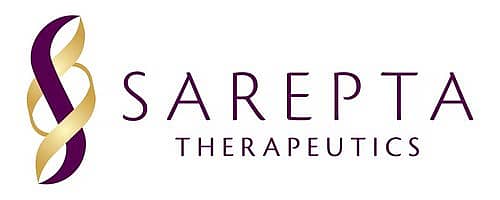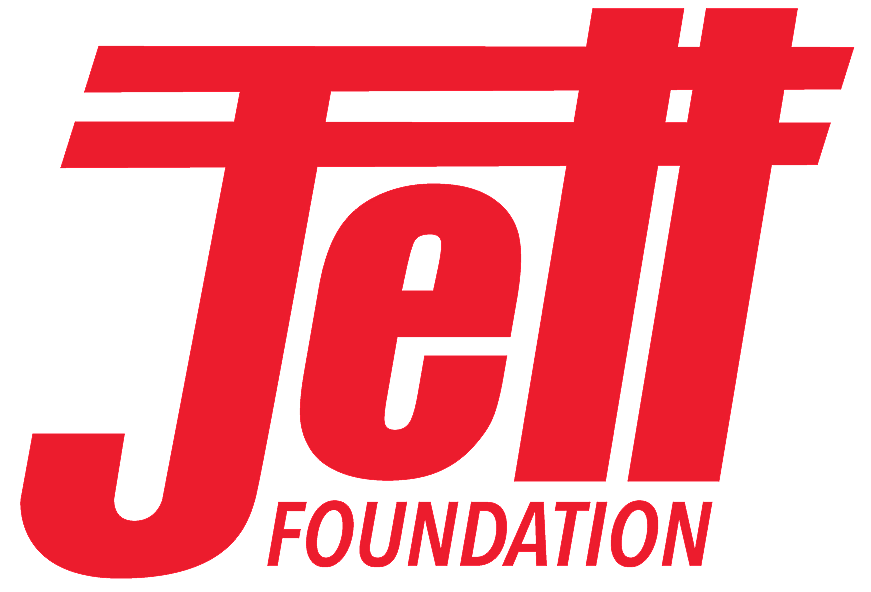
Today, Sarepta Therapeutics has shared that the FDA has accepted their New Drug Application (NDA) seeking accelerated approval for casimersen (SRP-4045) and provided a regulatory action date of February 25, 2021. Casimersen has been studied for the treatment of exon 45 amenable patients, approximately eight percent of patients with Duchenne muscular dystrophy. For more about this hopeful news, please read below or visit Sarepta’s website for the full press release.

SAREPTA THERAPEUTICS ANNOUNCES FDA ACCEPTANCE OF CASIMERSEN (SRP-4045) NEW DRUG APPLICATION FOR PATIENTS WITH DUCHENNE MUSCULAR DYSTROPHY AMENABLE TO SKIPPING EXON 45
— FDA grants Priority Review Status and sets regulatory action date for February 25, 2021
— FDA has indicated it does not currently plan to hold an advisory committee meeting to discuss the application
— Received FDA’s conditional approval of AMONDYS 45™ as brand name for casimersen –
— Casimersen has been studied for the treatment of exon 45 amenable patients, approximately eight percent of patients with Duchenne
CAMBRIDGE, Mass., Aug. 25, 2020 (GLOBE NEWSWIRE) — Sarepta Therapeutics, Inc. (NASDAQ:SRPT), the leader in precision genetic medicine for rare diseases, today announced the U.S. Food and Drug Administration (FDA) has accepted the Company’s New Drug Application (NDA) seeking accelerated approval for casimersen (SRP-4045) and provided a regulatory action date of February 25, 2021. The FDA has indicated it does not currently plan to hold an advisory committee to discuss the application. In addition, the Company has received conditional approval of AMONDYS 45 as the brand name for casimersen. Casimersen, a phosphorodiamidate morpholino oligomer (PMO), is engineered to treat patients with Duchenne muscular dystrophy (DMD) who have genetic mutations that are amenable to skipping exon 45 of the dystrophin gene.
The Company submitted its NDA filing in June 2020 and requested priority review, which the FDA granted. The NDA included data from the casimersen arm of the ESSENCE study (also known as Study 4045-301), a global, randomized, double-blind, placebo-controlled Phase 3 study evaluating the efficacy and safety of casimersen in patients amenable to skipping exons 45. An interim analysis from ESSENCE demonstrated a statistically significant increase in dystrophin production as measured by western blot in patients who received casimersen compared to baseline and placebo. The study is ongoing and remains blinded to collect additional efficacy and safety data.
“The FDA’s acceptance of our NDA for casimersen is an important step toward our goal of rapidly bringing therapies to patients living with Duchenne muscular dystrophy,” said Doug Ingram, president and chief executive officer, Sarepta Therapeutics. “If it is approved, casimersen, our third exon-skipping medicine in our PMO RNA-based platform, will offer treatment to the 8% of Duchenne patients who are amenable to exon 45 skipping.”
About Casimersen
Casimersen uses Sarepta’s proprietary phosphorodiamidate morpholino oligomer (PMO) chemistry and exon-skipping technology to skip exon 45 of the Duchenne gene. Casimersen is designed to bind to exon 45 of dystrophin pre-mRNA, resulting in exclusion, or “skipping,” of this exon during mRNA processing in patients with genetic mutations that are amenable to exon 45 skipping. Exon skipping is intended to allow for production of an internally truncated dystrophin protein.
About the ESSENCE Study
The ESSENCE study is a double-blind, placebo-controlled, multi-center Phase 3 study evaluating the efficacy and safety of casimersen (SRP-4045) and golodirsen (SRP-4053, approved as VYONDYS 53™). Eligible patients with out-of-frame deletion mutations amenable to exon 45 or 53 skipping are randomized to receive once weekly intravenous (IV) infusions of 30 mg/kg of SRP-4045 or 30 mg/kg of SRP-4053, respectively (combined-active group) or placebo for up to 96 weeks. This is followed by an open-label extension period in which all patients will receive open-label active treatment for 48 weeks, up to week 144 of the study.
Clinical efficacy is being assessed at regularly scheduled study visits, including functional tests such as the six-minute walk test (6MWT). All patients undergo a muscle biopsy at baseline and will undergo a second muscle biopsy either at week 48 or week 96.
Safety is being assessed through the collection of adverse events, laboratory tests, electrocardiograms (ECGs), echocardiograms (ECHOs), vital signs, and physical examinations throughout the study.
About Duchenne Muscular Dystrophy
Duchenne muscular dystrophy is a rare, fatal neuromuscular genetic disease that occurs in approximately one in every 3,500-5,000 males worldwide. Duchenne is caused by a change or mutation in the gene that encodes instructions for dystrophin. Symptoms of Duchenne usually appear in infants and toddlers. Affected children may experience developmental delays such as difficulty in walking, climbing stairs or standing from a sitting position. As the disease progresses, muscle weakness in the lower limbs spreads to the arms, neck and other areas. Most patients require full-time use of a wheelchair in their early teens, and then progressively lose the ability to independently perform activities of daily living such as using the restroom, bathing and feeding. Eventually, increasing difficulty in breathing due to respiratory muscle dysfunction requires ventilation support, and cardiac dysfunction can lead to heart failure. The condition is universally fatal, and patients usually succumb to the disease in their twenties.
About VYONDYS 53VYONDYS 53 is an antisense oligonucleotide indicated for the treatment of Duchenne muscular dystrophy in patients who have a confirmed mutation of the DMD gene that is amenable to exon 53 skipping.
VYONDYS 53 is approved under accelerated review based on an increase in dystrophin production in skeletal muscle of patients amenable to exon 53 skipping. Continued approval may be contingent upon verification of a clinical benefit in confirmatory trials.
VYONDYS 53 has met the full statutory standards for safety and effectiveness and as such is not considered investigational or experimental.
VYONDYS 53 was developed to use Sarepta’s proprietary phosphorodiamidate morpholino oligomer (PMO) chemistry and exon-skipping technology to bind to exon 53 of dystrophin pre-mRNA, resulting in exclusion, or “skipping,” of this exon during mRNA processing in patients with genetic mutations that are amenable to exon 53 skipping. Exon skipping is intended to allow for production of an internally truncated dystrophin protein.
Important Safety Information for VYONDYS 53
Hypersensitivity reactions, including rash, pyrexia, pruritus, urticaria, dermatitis, and skin exfoliation have occurred in VYONDYS 53-treated patients, some requiring treatment. If a hypersensitivity reaction occurs, institute appropriate medical treatment and consider slowing the infusion or interrupting the VYONDYS 53 therapy.
Renal toxicity was observed in animals who received golodirsen. Although renal toxicity was not observed in the clinical studies with VYONDYS 53, renal toxicity, including potentially fatal glomerulonephritis, has been observed after administration of some antisense oligonucleotides. Renal function should be monitored in patients taking VYONDYS 53. Because of the effect of reduced skeletal muscle mass on creatinine measurements, creatinine may not be a reliable measure of renal function in DMD patients. Measurement of glomerular filtration rate (GFR) by 24-hour urine collection prior to initiation of therapy is recommended. Monthly monitoring for proteinuria by dipstick urinalysis and monitoring of serum cystatin C every three months is recommended. In the case of a confirmed dipstick proteinuria of 2+ or greater or elevated serum cystatin C, a 24-hour urine collection to quantify proteinuria and assess GFR should be performed.
Adverse reactions observed in at least 20% of treated patients and greater than placebo were (VYONDYS 53, placebo): headache (41%, 10%), pyrexia (41%, 14%), fall (29%, 19%), abdominal pain (27%, 10%), nasopharyngitis (27%, 14%), cough (27%, 19%), vomiting (27%, 19%), and nausea (20%, 10%).
Other adverse reactions that occurred at a frequency greater than 5% of VYONDYS 53-treated patients and at a greater frequency than placebo were administration site pain, back pain, pain, diarrhea, dizziness, ligament sprain, contusion, influenza, oropharyngeal pain, rhinitis, skin abrasion, ear infection, seasonal allergy, tachycardia, catheter site related reaction, constipation, and fracture.
For further information, please see the full Prescribing Information.
About Sarepta Therapeutics
At Sarepta, we are leading a revolution in precision genetic medicine and every day is an opportunity to change the lives of people living with rare disease. The Company has built an impressive position in Duchenne muscular dystrophy (DMD) and in gene therapies for limb-girdle muscular dystrophies (LGMDs), mucopolysaccharidosis type IIIA, Charcot-Marie-Tooth (CMT), and other CNS-related disorders, with more than 40 programs in various stages of development. The Company’s programs and research focus span several therapeutic modalities, including RNA, gene therapy and gene editing. For more information, please visit www.sarepta.com or follow us on Twitter, LinkedIn, Instagram and Facebook.
Sarepta Forward-Looking Statements
This press release contains “forward-looking statements.” Any statements contained in this press release that are not statements of historical fact may be deemed to be forward-looking statements. Words such as “believes,” “anticipates,” “plans,” “expects,” “will,” “intends,” “potential,” “possible” and similar expressions are intended to identify forward-looking statements. These forward-looking statements include statements regarding the regulatory action date, set by the FDA, of February 25, 2021; the FDA’s indication that it does not currently plan to hold an advisory committee to discuss the application; the potential of casimersen, if approved, to offer treatment to the 8% of Duchenne patients who are amenable to exon 45 skipping; Sarepta’s goal of rapidly bringing therapies to patients living with DMD; the potential benefits of casimersen and exon skipping’s intention to allow for production of an internally truncated dystrophin protein.
These forward-looking statements involve risks and uncertainties, many of which are beyond Sarepta’s control. Known risk factors include, among others: Sarepta may not be able to complete clinical trials required by the FDA or other regulatory authorities for approval of casimersen; casimersen may not result in a viable treatment suitable for commercialization due to a variety of reasons including the results of future research may not be consistent with past positive results, or may fail to meet regulatory approval requirements for the safety and efficacy of product candidates; and even if casimersen results in a commercialized product, Sarepta may not achieve any significant revenues from the sale of such product; if the actual number of patients suffering from DMD is smaller than estimated, our revenue and ability to achieve profitability may be adversely affected; Sarepta may not be able to execute on its business plans and goals, including meeting its expected or planned regulatory milestones and timelines, clinical development plans, and bringing its product candidates to market, due to a variety of reasons, many of which may be outside of Sarepta’s control, including possible limitations of company financial and other resources, manufacturing limitations that may not be anticipated or resolved for in a timely manner, regulatory, court or agency decisions, such as decisions by the United States Patent and Trademark Office with respect to patents that cover Sarepta’s product candidates and the COVID-19 pandemic; and those risks identified under the heading “Risk Factors” in Sarepta’s most recent Annual Report on Form 10-K for the year ended December 31, 2019, and most recent Quarterly Report on Form 10-Q filed with the Securities and Exchange Commission (SEC) as well as other SEC filings made by Sarepta which you are encouraged to review.
Any of the foregoing risks could materially and adversely affect Sarepta’s business, results of operations and the trading price of Sarepta’s common stock. For a detailed description of risks and uncertainties Sarepta faces, you are encouraged to review the SEC filings made by Sarepta. We caution investors not to place considerable reliance on the forward-looking statements contained in this press release. Sarepta does not undertake any obligation to publicly update its forward-looking statements based on events or circumstances after the date hereof.
Internet Posting of Information
We routinely post information that may be important to investors in the ‘For Investors’ section of our website at www.sarepta.com. We encourage investors and potential investors to consult our website regularly for important information about us.
Source: Sarepta Therapeutics, Inc.
Sarepta Therapeutics, Inc.
Investors:
Ian Estepan, 617-274-4052
iestepan@sarepta.com
Media:
Tracy Sorrentino, 617-301-8566
tsorrentino@sarepta.com






